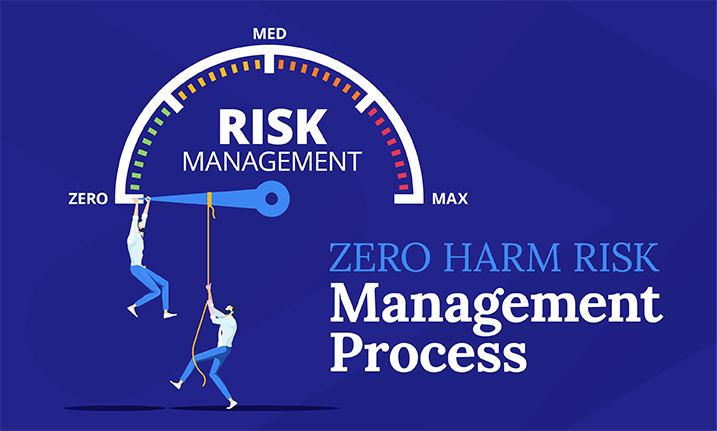

Adequate risk management is essential in any business, but it is especially important in high-risk industries such as manufacturing and construction where workers are at risk of serious injury or death.
A zero harm risk management process can help to minimise the chances of an accident or injury from happening and ensure that the appropriate safety measures are in place if an incident does occur.
In this article, we will look at what a zero harm risk management process involves. How to put one in place and how it can have a positive effect on the number of incidents and injuries occurring in your workplace.
What is the zero harm policy?
The zero harm policy is an initiative undertaken by the Australian Government to reduce the number of fatalities and injuries caused by workplace incidents.
The policy aims to ensure that, “there will be no serious or fatal injuries in workplaces across Australia”. This means that there should be no permanent disabilities, workplace deaths, serious illnesses or diseases resulting from work-related issues.
Although it’s impossible to avoid all accidents entirely, companies are responsible for implementing steps to prevent risk in the workplace.
What does a zero harm management system encompass?
Implementing a zero harm management system can be a complex process but is necessary for most companies.
Risk management ensures that the company has control over tasks and operations to avoid any harm or damage. Being proactive, rather than reactive, is vital.
A zero harm risk management process will ensure that the business takes every possible step to prevent accidents from occurring and ensure that there is no negative impact on your business’s reputation.
By following this type of risk management strategy, you can help protect your employees, as well as reduce costs by preventing any major incidents at work.
How to implement a zero harm risk management process
A zero harm risk management process is a strategic approach to eliminating all risks that could cause harm in the workplace. Having an effective process helps all onsite personnel work together to minimise accidents and injuries on the job.
A reliable process would include:
- Practical and well-researched processes and policies – it’s crucial that these are based on risk-based assessments, which can be easily rolled out using a risk management system such as Rapid Risk, as it offers one central location to report, store and follow up on all your company’s risks
- Safety-first leadership – strong leadership with a culture of promoting zero harm
- Personnel management – to ensure a culture of zero harm, it is important that all team members are comfortable in promoting a zero harm culture and that everyone understands the safety policies your company is promoting; this is most effective when started during the induction process, and regularly reassessed
- A strong reporting process – the establishment of a safety culture in which all employees speak up to prevent harm, including a mechanism for reporting such as Rapid Incident Reporting which allows for simple and compliant incident reporting for all staff, contractors and site visitors into one operation
- Data interpretation – while solid reporting is a vital part of the risk management strategy, quality data can be used to interpret information effectively and lead to improved safety measures in the future.
Related reading: Creating Strategic Risk Reports for Managers, executives, and key personnel.
Is it possible to achieve zero harm?
Some experts believe that zero harm is simply impossible and worry the approach promotes unrealistic targets. But there is no doubt that organisations that move towards adopting a zero harm approach, enjoy reduced incidents.
What is the key to success? Firstly, the approach must have real-life meaning to your team – because if your staff or contractors do not understand, believe, or know how to action what you are saying about safety in your workplace, your safety management systems will become meaningless.
Another consideration to remember with the Zero Harm Workplace policy is that there must be the same adoption and policy across the business – including all departments, contractors, stakeholders, and customers. So just because an employee or visitor can roam freely or undertake certain tasks without risk in one area, other areas might pose different risk levels, and this is where the risk of becoming injured or affected increases.
And even though Australia’s work safety system is one of many effective examples around the world, there are still many more ways that we can improve our approach to achieving safe workplaces for all.
Reducing risk in your workplace is about creating a culture where employees feel empowered to make decisions that increase safety. It’s also about making it clear what behaviours are expected and which ones will not be tolerated. Our software helps you create this type of environment by providing tools like Rapid Risk, Rapid Induct, and Rapid Incident Reporting.
We invite you to request a demo today so we can show you how Rapid’s software can help your business achieve zero harm.







